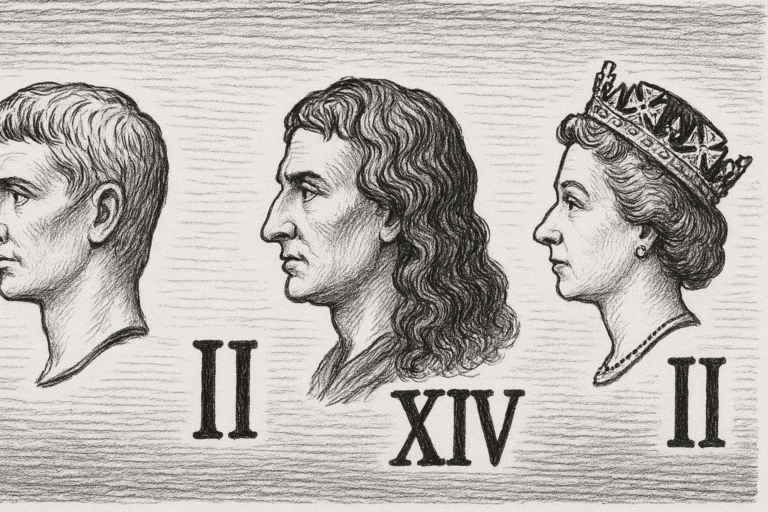What Is the Largest Roman Numeral and How Do You Write It?

Roman numerals, a numeric system originating in ancient Rome, have fascinated scholars and enthusiasts for centuries. While commonly used for small to medium-sized numbers today, historically Roman numerals could represent incredibly large values. This article explores the largest possible Roman numerals, explains the system used by Romans to write them, and demonstrates how you can write exceptionally large numbers using traditional Roman numeral conventions.
The Basic Structure of Roman Numerals
Before addressing the largest numeral, it’s essential to understand the fundamental components of Roman numerals:
- I = 1
- V = 5
- X = 10
- L = 50
- C = 100
- D = 500
- M = 1000
These numerals are combined using additive and subtractive notation to represent numbers.
Limitations of Standard Roman Numerals
Standard Roman numerals have limitations regarding the largest numbers they can efficiently represent. Typically, the largest straightforwardly represented number is 3999 (MMMCMXCIX). Beyond this, traditional numeral rules become unwieldy and impractical.
Vinculum (Overline) Notation
To overcome these limitations, Romans developed the vinculum system—a horizontal line placed above numerals to multiply their value by 1,000. Examples include:
- V̅ = 5,000
- X̅ = 10,000
- L̅ = 50,000
- C̅ = 100,000
- D̅ = 500,000
- M̅ = 1,000,000
This system significantly expanded the numeric capabilities of Roman numerals, allowing representation of far larger numbers.
How to Write Extremely Large Numbers
Step 1: Understanding Vinculum Multiplication
The vinculum multiplies the numeral’s base value by 1,000. For example:
- IV̅ represents 4 × 1,000 = 4,000
- X̅L̅ represents 40,000 (50,000 – 10,000)
Step 2: Combining Symbols
Large numbers combine basic numerals and vinculum notation:
- 1,234,567 would be written as M̅C̅C̅X̅X̅X̅IV̅DLXVII (1,000,000 + 200,000 + 30,000 + 4,000 + 500 + 60 + 7)
What Is the Largest Roman Numeral?
Theoretically, there is no absolute maximum to Roman numerals. The vinculum can extend indefinitely, allowing for increasingly large numbers. Practically, the largest numeral typically represented historically is in the millions. For example, 3,999,999 would be represented as:
- M̅M̅M̅C̅M̅X̅C̅I̅X̅CMXCIX (3,000,000 + 900,000 + 90,000 + 9,000 + 900 + 90 + 9)
Historical Usage of Large Numerals
Ancient Romans rarely required extremely large numbers, typically using large numerals for military and administrative purposes. Vinculum notation enabled clarity and compact representation for official documents and inscriptions.
Modern Practical Limitations
Despite theoretical flexibility, modern use of Roman numerals typically avoids very large numbers due to readability, complexity, and typographic limitations.
Typographic and Digital Challenges
Overline notation can be difficult to reproduce digitally or typographically. Alternatives such as parentheses or brackets (e.g., (V) for 5,000) are sometimes used informally.
Applications of Large Roman Numerals
While uncommon, large Roman numerals find niche applications today:
- Historical inscriptions and monument dedications
- Ceremonial and commemorative documents
- Academic and educational contexts for illustrative purposes
Understanding and Reading Large Roman Numerals
To accurately read large Roman numerals, follow these steps:
- Identify the vinculum to determine multiplication by 1,000.
- Convert each numeral beneath the vinculum separately.
- Combine all parts systematically.
Example: M̅V̅CDLXIII
- M̅ = 1,000,000
- V̅ = 5,000
- CD = 400
- LX = 60
- III = 3
Thus, M̅V̅CDLXIII = 1,005,463.
The Cultural Significance of Large Roman Numerals
Large Roman numerals are more than numerical tools; they embody historical and cultural resonance. Utilizing these numerals:
- Highlights continuity with classical traditions
- Enhances formal and ceremonial significance
- Emphasizes heritage and historical depth
Common Misconceptions and Mistakes
Writing large numerals requires accuracy. Common errors include:
- Incorrect placement of subtraction notation (e.g., using IC instead of XCIX for 99)
- Incorrect multiplication by misplacing the vinculum
- Repeating numerals excessively (correct limit is three consecutive repetitions)
Tips for Writing Large Numerals Accurately
Follow these practical tips to avoid common pitfalls:
- Break numbers into clear thousands, hundreds, tens, and ones components.
- Verify subtraction rules carefully (I before V or X, X before L or C, C before D or M).
- Avoid repeating symbols excessively by correctly applying subtraction.
Educational Benefits of Learning Large Roman Numerals
Understanding large Roman numerals offers educational advantages:
- Enhances numeracy and arithmetic skills
- Strengthens attention to detail
- Improves historical knowledge and appreciation
- Encourages logical and structured thinking
Interactive Learning Resources
To master large Roman numerals, use interactive learning resources:
- Online Roman numeral converters
- Educational apps and games
- Numeral charts and printable references
These resources offer practice and reinforcement to ensure proficiency and accuracy.
Challenges in Modern Contexts
Despite historical significance, practical use of large Roman numerals presents modern challenges:
- Reduced readability compared to Arabic numerals
- Limited utility for complex mathematical or financial applications
- Typographic and digital representation difficulties
Understanding these challenges helps contextualize appropriate uses for Roman numerals.
Conclusion
The question, “What is the largest Roman numeral?” leads us through the fascinating history and practical intricacies of the Roman numeric system. While no absolute theoretical maximum exists, practical limits are dictated by readability, context, and usability. Through vinculum notation, the Romans expanded their numeric system significantly, enabling representation of millions and beyond.
Today, large Roman numerals primarily serve ceremonial, historical, and educational purposes, reflecting their symbolic and cultural value. Learning how to read and write large Roman numerals enriches historical understanding, strengthens numeric skills, and enhances appreciation for classical traditions.
Utilize available conversion tools, charts, and educational resources to confidently interpret and construct large Roman numerals, connecting personal learning with broader historical and cultural contexts.





